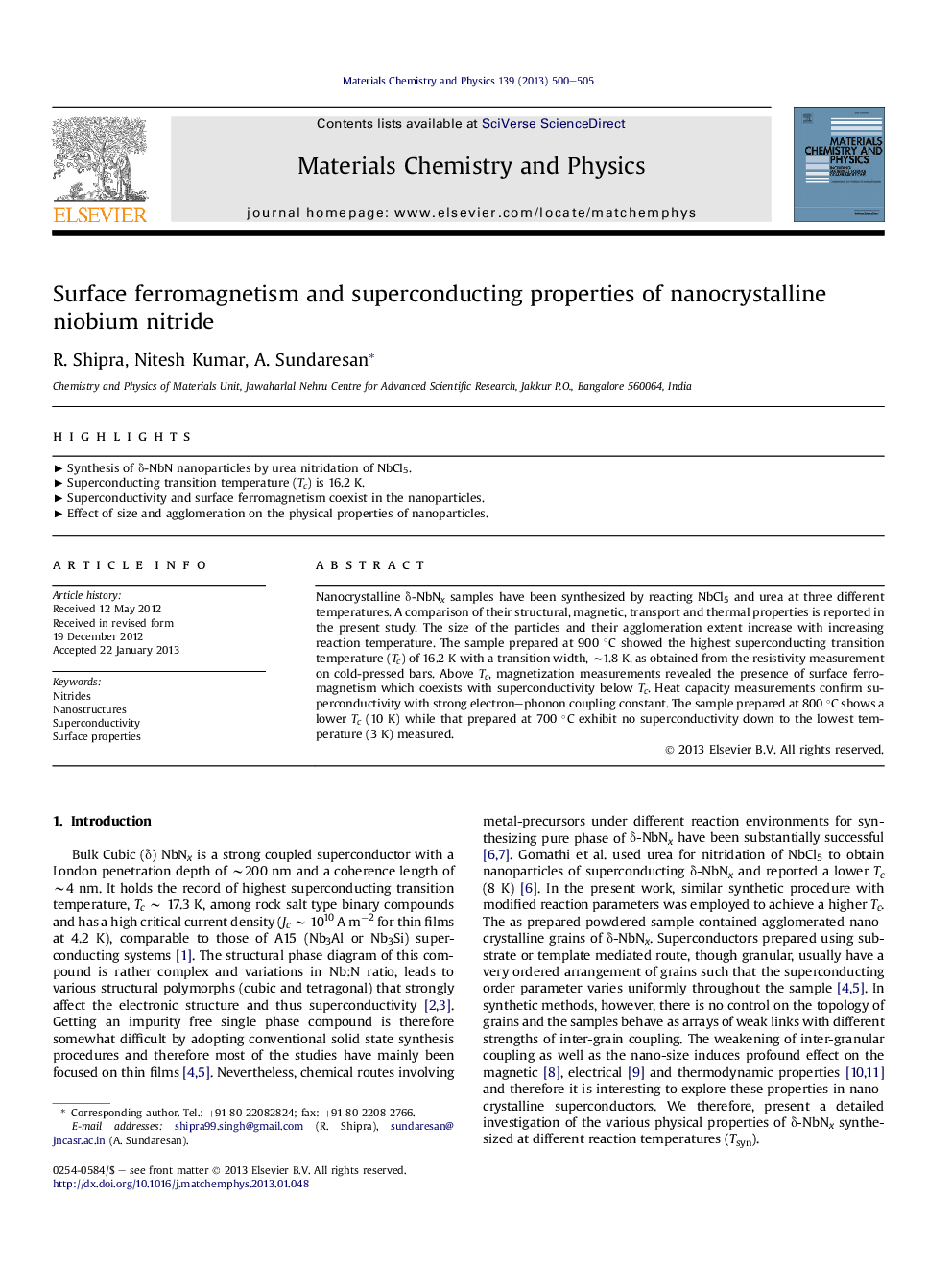| Article ID | Journal | Published Year | Pages | File Type |
|---|---|---|---|---|
| 1522734 | Materials Chemistry and Physics | 2013 | 6 Pages |
Nanocrystalline δ-NbNx samples have been synthesized by reacting NbCl5 and urea at three different temperatures. A comparison of their structural, magnetic, transport and thermal properties is reported in the present study. The size of the particles and their agglomeration extent increase with increasing reaction temperature. The sample prepared at 900 °C showed the highest superconducting transition temperature (Tc) of 16.2 K with a transition width, ∼1.8 K, as obtained from the resistivity measurement on cold-pressed bars. Above Tc, magnetization measurements revealed the presence of surface ferromagnetism which coexists with superconductivity below Tc. Heat capacity measurements confirm superconductivity with strong electron–phonon coupling constant. The sample prepared at 800 °C shows a lower Tc (10 K) while that prepared at 700 °C exhibit no superconductivity down to the lowest temperature (3 K) measured.
► Synthesis of δ-NbN nanoparticles by urea nitridation of NbCl5. ► Superconducting transition temperature (Tc) is 16.2 K. ► Superconductivity and surface ferromagnetism coexist in the nanoparticles. ► Effect of size and agglomeration on the physical properties of nanoparticles.
